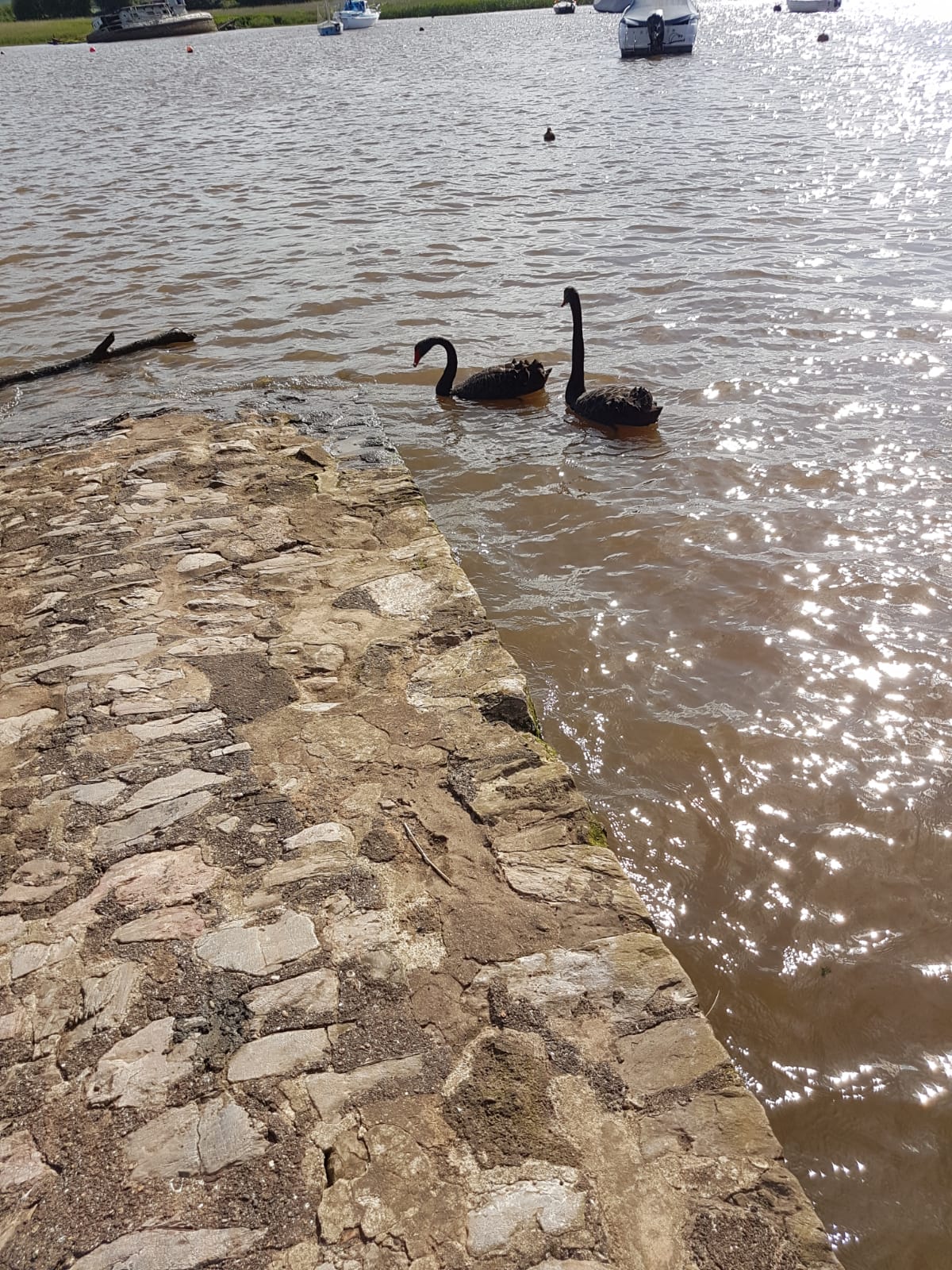I vividly remember that lavish but gaudy five-star hotel at mid-day under the high African sun on the banks of a glittering Niger River. It was built with
Across the room, in a corner, I noticed a table of seven younger but not young Chinese. Smiles of confidence and determination and occasional smug laughs. The next generation of colonial masters but not by force but by debt and reciprocity. These masters of the universe were smoking ridiculously long slender cigarettes. I wondered what they were up to. I was in Bamako, capital of Mali.
I guess it must have been 2007 or thereabouts. We were on our way to a gold exploration project in a remote part of western Guinea. The project-area was within a stone’s throw of the
So what were these young Chinese businessmen doing in Bamako? Most probably they were on a mission to buy Africa’s commodities. Maybe trying to capture Africa’s metal endowment. Metals are critical and strategic to their technological future. Critical means you need it, strategic means you do not have it. The European Union has a list of critical metals but that is about all it has done so far – make lists.
The US has trading clout and rattles the sabre. Yes, China needs to know that trade is not a road with four lanes going one way with one lane going the other. Can we blame China? The trade imbalance is mostly down to the Chinese working harder and saving much, much more. There could not be a greater contrast between Trumpian walls and Xi’s belt n road bridges. All empires whether they are military or economic degenerate near the end of the natural cycle. It is the inevitable and natural law of entropy. Hunger subsides and energy dissipates and a new energized contender emerges. But it is the vision that fails first.
China has been moving into Africa for some time. The aim is to secure tomorrow’s supply of critical and strategic metals. They offer in exchange debt financing for vital infrastructure. African mines are the collateral. China also scrambles for metals needed for cell-phones, electric vehicles (EVs) and utility-scale power storage. Even the Cloud is made of copper.
But let’s look at a metal that is a key component in EVs and all kinds of electronic batteries.
The word Cobalt comes from the German word for goblin. In the 1500’s silver miners in Saxony got a surprise when trying to smelt what they believed was
Cobalt contributes up to 60% to the value of lithium-ion batteries. The use of these batteries in electric vehicles (“EV”) is the key driver of cobalt demand. Bloomberg forecasts 35% of vehicles sold by 2040 will be electric, currently, only 1% of global sales are EV. EV sales have recently been rising high. Bloomberg’s predictions now look conservative.
In the last six
The DRC never had a peaceful transition of power. It is a country with an area of France, Spain, Germany, Sweden and the UK combined. The DRC faces the mos daunting infrastructure challenge on the African continent. Vast geography, erupting and persistent conflict and disease, low population density, great rivers. It is easier and much quicker to take to the air though way beyond the means of the maddening crowd. To fly over vast tracts of tropical rainforest than to attempt any excursion on soupy laterite roads where they exist. It is impossible for a broke, bungling but most of all corrupt regime to rule such a shredding jungle. Governance, business, and commerce are cancerous with corruption. The precious islands of cobalt and a relative sea of copper come from the mineral-rich province of Katanga. Where and when in Africa has a mineral-rich province wanted to secede from its stodgy motherland? Look no further than mineral-rich Biafra and a war of session with the rest of Nigeria in 1967.
What do we need now to change cobalt from a niche into an even more strategic metal? The West to be in a trade war with a superpower that controls the cobalt
Last February the price of cobalt fell 40 percent from a previous mid-November peak. In response production of cobalt surged in the Congo by 44% this year. World annual production had now reached a lofty 106,000 tonnes. At half this annual mine supply to account for other vital uses for
We finish on the geology as there is another twist. Cobalt is mined for the most part as a by-product of nickel and copper. For this reason, it is hard to stimulate investment in cobalt exploration outside the DRC. Mine economics hinge on the prices of the main-product metals in the orebody
There are four distinct deposit types for cobalt:
- Sediment-hosted deposits largely of Precambrian age and largely confined to the CRC – Zambia copper-belt.
- Laterite deposits. Mid tertiary to recent nickel-rich laterite generated by tropical weathering of peridotite. E.G. New Caledonia, Cuba and Australia
- Magmatic – Nickel-Copper
sulphide concentrations such as Sudbury in the Canadian, Norilsk in Russia, Voisey’s Bay in Canadian Maritimes and the Bushveld in South Africa.
- Hydrothermal/volcanic deposits such as Bou Azzer in Morocco, the Idaho Cobalt Belt and the
Outokompu Five-Element (Ni, Co, Ag, As, Bi) vein-type deposits.
What way will the future demand for cobalt go? What disruption in the precarious cobalt geopolitics and corrosion of the supply chain? Hard to predict based on current information? Is it a low-predictability but high-consequence situation? Nassim Nicholas Taleb’s definition of a Black Swan. A cobalt-blue swan? As Taleb cautions: the fact that you have never seen one does not mean it does not exist. The brace of black swans in the blog-photo above is of a romantic pair seen in Topsham, Devon during the early summer by my good friend Gerry Lawlor. Brexit is also a Black Swan.
Do your own careful due diligence; it is not only technical. Down by the river, there are cesspools of corruption and human exploitation. A goblin is a small, grotesque, mischievous and sometimes outright malicious creature. It is also greedy, especially for gold and jewelry. Beware of goblins staking ground in the long-beam shadow of the head-frame. We aspire to protect the environment and tackle global warming and the proliferation of plastic. Clean energy technology needs critical metals. These metals can not be synthesized but can only be mined. We must somehow forge the murky river to get to the clean technology and energy on the other side. Yes, we have to save our planet but we must also avoid returning to the cave.
[1]Smaltite is a cobalt arsenide.
[2]Estimates from Benchmark Minerals, a specialist battery research company.
[3]Needless to say Glencore is also involved in cobalt mining in cobalt-enriched Katanga and those that are interested can read about the Kamoto Project.


History is replete with “Black Swans”. Europeans once used the term “white as a swan” to mean “snow-white”, because all swans in Eurasia were white. Then in 1697, a Dutch navigator discovered black swans in Western Australia, turning the expression topsy-turvy for incredulous Europeans.
“Black Swans” in the minerals industry include the discovery of diamonds in Brazil, and later in South Africa, breaking the supply monopoly held for centuries by Indian mines. A more recent example is the discovery of Carlin-type “invisible gold” deposits in northern Nevada, now well past 100 million ounces produced, and climbing. There are other examples, both striking and subtle, and certainly more to come at large and small scales.
Scientists are in the main aware of the Black Swan syndrome, but politicians and even planners and economists find it difficult to include a “Black Swan” column in their spreadsheets or campaign speeches. Educating them to give some leeway to technical folks’ ideas is part of our job.
Wow! Thank you Fred for that. Your comments are what make writing this blog worthwhile. Sharing new information and insights. The discoveries you mention were indeed paradigm shifts and were indeed not only unpredictable and of high consequence but were outside the realm of what we considered possible at the time and were of very high consequence. These discoveries and what followed transformed the economic trajectories of the countries and states. What the anti-mining lobby forgets is that major cities like San Franciso, Denver, Johannesburg, and Perth started as mining camps. Looking forward to the “more to come” which is an exhilarating prospect. The search for the “more to come” is very hard to finance these days. Group Eleven Resources (ZNG:TSX-V) is applying such a large-scale rethink to the Limerick Basin in Ireland. It is high-risk but we hope the prize is a Tier-one zinc deposit. Keep well Fred.
Note: I am a co-founder and significant shareholder in Group Eleven Resources.
Hello John,
Very thought provoking. Ironically sitting on a cobalt deposit right now in Ontario but we are chasing other things.
There are plenty of complex sulphide deposits that are drilled out and just sit there for decades hoping someone comes up with the right alchemy that will not produce noxiousness up the chimney and annoy the chattering classes. Aren’t sulphide ores just one big horror show? When did you last hear anyone sing the praises of energite?
As your article points out, we are going to have to get ourselves sorted and mine these metals.
The big cynic in me says that we are just talking to ourselves because no one wants to listen.
Maybe we shall see a cobalt bloom in years to come.Pun intended
Cheers,
Chris C.
Thank you Chris, great to hear that you are out there exploring with your geology hammer still cracking rocks.
John Thanks for a great article. As you note, the EU makes lists. However China goes out and makes deals. I now think that the EU has adopted a BANANA policy – Build Absolutely Nothing Anywhere Near Anything. Keep flying the flag.
Thanks John, I like the BANANA policy!
One black swan is rare enough. Spotting two is incredible. It must be a photofit job. I can’t see the sellotape.
Hi Gerry,
You know it is real. You took the photo. We better watch out for what is coming down the track!
Cheers
John
Spot on John – is anyone of influence listening?
I sent an email to EFG about Critical Metals list (which is dated from 2008 – anything more recent) but it appears that security of supply falls way behind other concerns such as Nimby. Of course there was no response. Ireland is rapidly becoming close to impossible to explore for resources with ill informed strident views holding sway. Counter arguments put by professionals with knowledge are seen as biased and as such any proposals to bring sustainable environmentally sound mining of those metals, where they exist will have to be made so that all objections can be answered. Otherwise we are all heading back to that cave.
Hi Graham,
Many thanks for your response. Those of influence are not even aware that there is a world-class zinc district in Ireland. Maybe that is our fault individually and as an industry. I can feel your frustration palpably. Unfortunately as scientists we try to counter misinformation logically when as far as the Nimby is concerned we are dealing with emotional outrage and an urge to lash out and blame something or somebody. As earth scientists, firstly we have to inform, but with emotional intelligence I believe we most of all have to win trust.
Cheers and keep exploring.
John